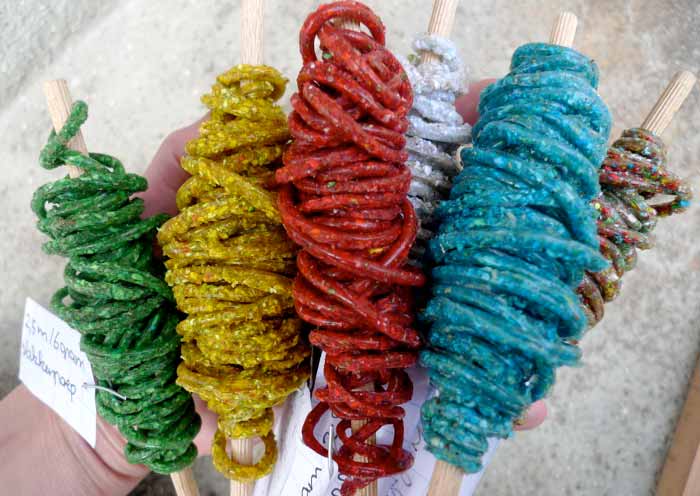156 is not a very interesting number, it shares its name with 156 Xanthippe which is a large main belt asteroid around 116km wide. 157 is only slightly more interesting. 157 is a prime number. It also shares its name with a much smaller 19km asteroid called 157 Dejanira. 157 is also a strain of E Coli which is the cause of food sickness. All very exciting, but in this last fortnight we’ve been up to some more exciting things ourselves.
In week 156 we were asked to speak at a local even called UTMessan. It is a two day conference. Day 1 is a paid event with speakers from the technology industry. Day 2 is open to the public and features more hands-on demonstrations as well as short talks. We did a presentation about the Internet of Things for 30 minutes on the first day and a 5 minute version on the second day. They presentations were recorded, so hopefully we’ll be able to add a link for those who are interested.
The UTMessan conference was interesting. We managed to have a look around at the trade booths, which consisted of many Icelandic companies we never knew existed. These were the more nitty-gritty lower-stack types of companies that never get the credit they deserve. From rack space providers to the companies that built and manage the data centers here in Iceland, they were on show at UTMessan. There were several talks that mentioned sensors, Internet of Things, robots, M2M (Machine 2 Machine) businesses, and the age of mobile. It was great to listen to some of the talks and discussion, meet some new and old friends and hopefully entertain and teach a few folks about the Internet of Things and (optional.is).
For Vísar/Skólapúlsinn we’ve been hard at work with their largest survey. At the beginning of week 156 we sent out around 10,000 emails with login information to parents of compulsory school children. This accounts for nearly 3% of the entire country. The initial response rate for the survey was around ~20%. The number of desktop to non-desktop users was split roughly 3:1 for about ~22% taking the survey on their phone or tablet. In week 157 we send a follow-up SMS reminder to everyone who still had not completed the survey. This took a day to stagger and send ~6000 SMS messages. We managed to get about a ~15% bump in responses after that to get to a little above 37% response rate. Looking at the logs, we see that around ~51% of the respondents to the SMS message took the survey on their mobile phone or tablet. We are delighted with the results so far. This method has worked will in the past because we don’t always have everyone’s email address or phone number. Sending a first email is cheap, so we do that. We also realize that a lot of people don’t read their email or things get caught in spam, so our second point of contact is via their mobile phone. This costs more, but allows us to reach people who might have otherwise slipped through the cracks. Today, we’ll send a second reminder email to all the people who still haven’t answered the survey. Next week, the customer begins to contact some of the remaining people via phone to further get them to respond. We still have a few more emails; final reminders and final-final reminders, but that is for weeks 158 and 159.
Overall, we’re very happy with how the sending has been going and we’ll continue to tweak and analyze the results to determine the half-life of an email versus and SMS, A/B test some messages in the future and generally try to improve the whole experience.
News from down under: a few of our Australian projects are slowly moving forward. These are mostly visualization based projects. We’re either taking existing data and producing interesting views of the data to show interesting trends or unexpected situations, or we’re digging deep into the data to improve some business metrics. The famously mis-attributed quote from Deming which he never said, “You can’t improve what you don’t measure”. We’re going to look into how some companies time is spent and when/where/why so they can improve it. This is part of the idea behind the Tindfell project, which dove-tails nicely into what they are interested in doing. As with Deming, it is never clear-cut and you can’t manage only data and figures along, good management and training are needed. So a tool that not only reports, but creates a feedback loop for improvement and educating the team is crucial.
In week 156 we also sent out our 8th edition of the newsletter. Then proceeded to spend some time revamping the template to make it more flexible and mobile friendly. In our next quarterly newsletter you should see the revamped format – we hope you like it.
Finally, we’ve sent away for several sample IC chips for one of our newest little side projects. Currently called hindber, we’re building-up a physical hardware prototype. Once we know that works (or doesn’t) we’ll have a look at next steps. Until then, this will slowly tick along each week when we have some free time.
Bric-à-brac
How about your next lino floor being made from snail poop? That’s what artist Lieske Schreuder is designing. The snails eat colored paper, which is then pooped-out in color and harvested for potential uses.
What started out as a prototype to test a game engine in week 156, is now going to be a real game and a good contender for Game of the Year 02014, by the end of week 157. The team behind Goat Simulator is selling for $10 and we predict they will make a small fortune!
This is an amazing artist who’s medium is those tiny sticker dots. Watch has she slowly builds-up some amazing cityscapes.
Finally, we leave you with these amazing sliding doors. I’m not sure how you’d put a lock on them, but they are very impressive for room dividers!

